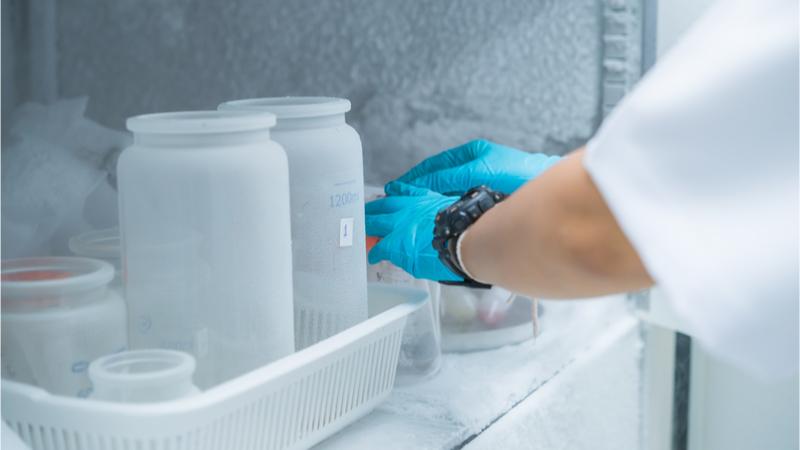Dear S -
1) Deli-style refrigerators are great for cheese and salami, but not necessarily star performers for providing a stable environment to a product in need of a very tightly controlled 2-8°C environment. You could obtain a higher performance refrigerator. I know this is not the most cost-effective solution, but an obvious solution, nonetheless. Whether you would replace the unit depends on the value and sensitivity of your refrigerated items.
2) Another option is to give the controller a good PID tuning of the control loop. I'm guessing your company has a specialist somewhere in the facilities department who will know exactly how to do this. It is amazing what a good tuning do to change the behavior of a refrigerator. For reference.
3) You could perform a more detailed mapping of the cold spot and then use a procedural control (SOPs, signs, etc.) to warn people to not store product in that area. You may want to make it impossible to store things in the area by permanently installing a cage to prevent use of that area.
4) Another approach is to buffer the temperatures. Determine the smallest volume product stored in the refrigerator, or the least amount of packaging. Then remap with the probes buffered in a way that simulates the product, with a worst case scenario twist. For example, if you never store volumes less than 50mL in this fridge, then put your mapping sensors in bottles with 25mL of placebo to buffer the temperature response.
This should make the "cold spot" disappear. But, you will need procedural controls to make sure nothing smaller than 25mL (or safer yet 50mL) is stored in the fridge. You can apply the same technique to a box with no product in it, or even a bottle with no product in it. The only goal is to buffer the temperature response to mimic the product, without buffering more than the actual product would experience.
5) Another option is simply to increase the set-point to 6°C. If you can get that cold spot up to 1.5°C (though hopefully higher), you could utilize a rounding argument. 1.5°C is 2°C, though it is not 2.0°C. And you said the product spec was 2-8°C, not 2.0 to 8.0°C. Not my favorite approach, but it gets the job done. I'd be careful with this one if your refrigerator is storing something that will truly be damaged by a phase change, like a vaccine. In that case, it's not worth the risk.
Number 2 is usually the easiest approach, if your controller can be tuned or adjusted. In order of ease and sensibility: 3, 4, or 5 come next. Number 1 is obviously the longest term and highest quality approach, and of course, the most costly.
Best regards,
Paul Daniel, Sr. Regulatory Compliance Expert / Validation Program Manager
paul.daniel@vaisala.com



Add new comment